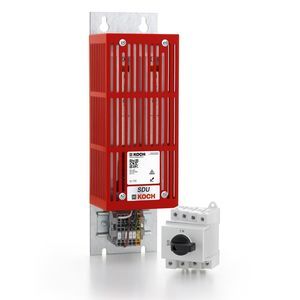

- Company
- Products
- Catalogs
- News & Trends
- Exhibitions
Active energy management unit PxtRX

Add to favorites
Compare this product
Characteristics
- Options
- active
Description
Max. Operating voltage UZmax (UL)
848 [VDC]
Max. Operating voltage UZmax (IEC)
1.000 [VDC]
Max. Current storage continuous Ic
30 [A] (continuous)
Max. Peak power Pmax (at Uc = 800 VDC)
48 [kW] (peak 45s at a cycle time of 180s)
Max. Continuous output Pmax (at Uc = 800 VDC)
24 [kW] (continuous)
The PxtRX is sized for a current load capacity of 30 A duration and 60 A peak for 45 seconds. In combination with a high storage voltage of up to 800 Volt DC, the device is able to generate a power of almost 50 kilowatts.
If this power is not sufficient for your application, several PxtRX devices, like the PxtFX devices, can be connected in parallel. Depending on the application, active energy management systems can thus be created that fill large control cabinets. We offer ready-to-connect complete systems in control cabinets under the type designation KTS.
These include active energy management devices of the Pxt family, application-specific storage units, the appropriate fuses, cabling and, depending on the storage units used, passive or active dischargers. One feature is particularly helpful for the PxtRX in such KTS control cabinet solutions: It also works trouble-free with cable lengths to the DC link of up to 20 meters.
The PxtRX is the big brother of the PxtFX and is suitable for any application in connection with higher energy density storage units such as double layer capacitors or batteries.
The applications are manifold, the devices provide benefits through a single feature or through the combination of two or more features. The first thing that comes to mind is the recuperation of the machine's braking energy, which increases energy efficiency.
VIDEO
*Prices are pre-tax. They exclude delivery charges and customs duties and do not include additional charges for installation or activation options. Prices are indicative only and may vary by country, with changes to the cost of raw materials and exchange rates.









